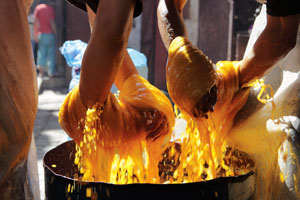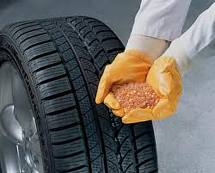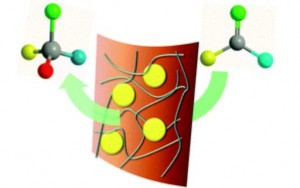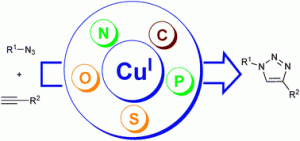 A Catalysis Science & Technology article has appeared in the society magazine Chemistry World. The paper, by Colin P. Horwitz, Terrence J. Collins and colleagues from Carnegie Mellon University, Pittsburgh, has recently been published as an Advance Article, read the original manuscript:
A Catalysis Science & Technology article has appeared in the society magazine Chemistry World. The paper, by Colin P. Horwitz, Terrence J. Collins and colleagues from Carnegie Mellon University, Pittsburgh, has recently been published as an Advance Article, read the original manuscript:
Fe-TAML/hydrogen peroxide degradation of concentrated solutions of the commercial azo dye tartrazine
Evan S. Beach, Ryan T. Malecky, Roberto R. Gil, Colin P. Horwitz and Terrence J. Collins
Catal. Sci. Technol. , 2011, Advance Article
DOI: 10.1039/C0CY00070A, Paper
.
Real-world treatment for dye-contaminated effluents![]()
US scientists have found that a dye oxidation process using low levels of an iron catalyst could be used to degrade highly contaminated wastewater under ambient conditions.
128 tonnes of dyes are released daily into the global environment and the cost to the textile industry of removing the dyes is high. Wastewater remediation is challenging because of its diverse and often changing composition. Multiple technologies are employed to achieve the regulatory standard for treated water discharge. In some cases, remediation of highly concentrated waste streams becomes a greater challenge because biological treatment is too slow or ineffective or chemical treatment is inefficient… Read the full article in Chemistry World














 , well worth a listen:
, well worth a listen: